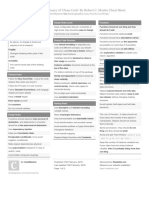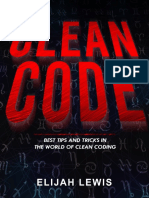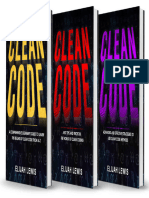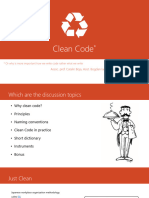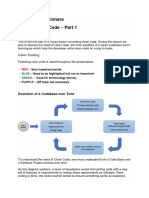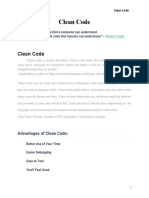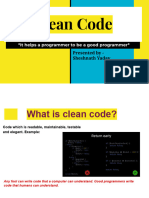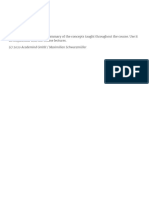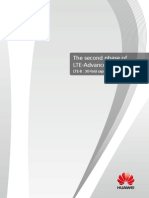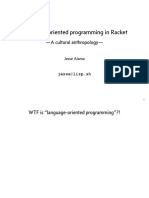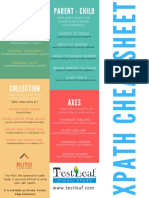0% found this document useful (0 votes)
108 views22 pagesSlides Getting Started
The document discusses the concept of "Clean Code". Clean Code is code that is readable, concise, and easy to understand. It should avoid unintuitive names, complex nesting, and large code blocks. Writing clean code involves following best practices like using meaningful names, short functions, and clear comments. The document outlines some key principles for writing clean code, such as keeping variables and functions short, using descriptive names, and handling errors properly. It also contrasts clean code with "dirty code" which is difficult to understand and maintain over time.
Uploaded by
Amer Al SarayrahCopyright
© © All Rights Reserved
We take content rights seriously. If you suspect this is your content, claim it here.
Available Formats
Download as PDF, TXT or read online on Scribd
0% found this document useful (0 votes)
108 views22 pagesSlides Getting Started
The document discusses the concept of "Clean Code". Clean Code is code that is readable, concise, and easy to understand. It should avoid unintuitive names, complex nesting, and large code blocks. Writing clean code involves following best practices like using meaningful names, short functions, and clear comments. The document outlines some key principles for writing clean code, such as keeping variables and functions short, using descriptive names, and handling errors properly. It also contrasts clean code with "dirty code" which is difficult to understand and maintain over time.
Uploaded by
Amer Al SarayrahCopyright
© © All Rights Reserved
We take content rights seriously. If you suspect this is your content, claim it here.
Available Formats
Download as PDF, TXT or read online on Scribd
/ 22



